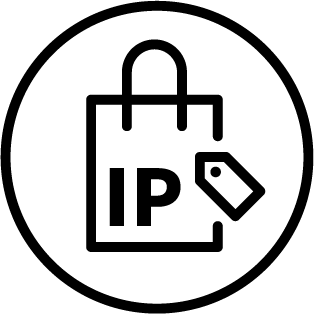| Clock divider by 3 |
100 Points |
52.000 Gates |
370 MHz |
130 nm |
|
     |
|
There are 2 types of circuits in digital logic world. One is combinational, and the other is sequential. The difference between them is that the latter one has storage (memory) while the former one does not. Thus, in contrast to combinational circuits, whose output depends only on the current values of its inputs, the output of sequential circuits depends not only on the current values of its inputs but also on the past values of them. Based on the characteristic of sequential circuits, we can build counters. In addition, we can further build clock dividers with the counters we designed
|
Introduction |
| Rapid IO PHY in 65nm |
By Quotes |
2.295 μm^2 |
25 MHz |
65 nm |
|
     |
|
The IP is designed for chips that perform high bandwidth data communication while operating at low power consumption. It can also be used in any serial interface where timing and electrical specification can be satisfied.
This IP has four individual Transmitter (TX) and Receiver (RX) channels, and one common phase lock loop (PLL).
|
Introduction |
| RC Oscillator |
By Quotes |
0.970 μm^2 |
10.2 Hz |
3 nm |
|
     |
|
The digitally controlled RC oscillators optimized for ultra low power applications.
Application:
• Hand held devices
• Wireless Power devices
• Battery powered stand-by devices
|
Introduction |
| Power Controller |
By Quotes |
0.165 μm^2 |
None |
90 nm |
|
     |
|
It is a configurable core that is configured for each specific SoC, delivering all the necessary auxiliary supply, monitoring and protection.
|
Introduction |
| 8051 Core |
By Quotes |
None |
20 MHz |
None |
|
     |
|
The 8051 has gained great popularity since its introduction and is estimated it is
used in a large percentage of all embedded system products.
The basic form of 8051 core includes several on-chip peripherals, like timers and
counters, additionally there are 128 bytes of on-chip data memory and up to 4K bytes of
on-chip program memory.
|
Introduction |
| UART Serial Interface Controller |
By Quotes |
None |
300 MHz |
None |
|
     |
|
UART compatible Serial Interface Controller with receive and transmit FIFOs and support for all standard bit rates from 9600 to 921600 baud.
Applications
UART Communications
RS232, RS422, RS485 etc.
Micro-controller interfacing
|
Introduction |
| I2C Master Serial Interface Controller |
By Quotes |
None |
300 MHz |
None |
|
     |
|
Master serial controller compatible with the popular Philips® I2C standard. Features a simple command interface and permits multiple I2C slaves to be controlled directly from ASIC device. Supports standard (100 kbits/s), fast (400 kbits/s) and custom data rates well above 4 Mbits/s. Setup and hold-times on the SDA pin are fully configurable.
Applications
Inter-chip board-level communications
Standard 2-wire comms between a wide range of peripherals, MCUs and COTs ICs
|
Introduction |
| I2C Slave Serial Interface Controller |
By Quotes |
None |
300 MHz |
None |
|
     |
|
Slave serial controller compatible with the popular Philips® I2C standard. Permits an I2C Master to communicate with your ASIC device via a set of user-defined config and status registers. Supports standard (100 kbits/s), fast (400 kbits/s) and custom rates in excess of 4 Mbits/s.
Applications
I2C slave communication via your ASIC
Inter-chip board-level communications
|
Introduction |
| 8-bit / 16-bit Flash memory controller |
By Quotes |
None |
200 MHz |
None |
|
     |
|
FLASH memory controller ideal for interfacing to a wide range of parallel FLASH memory components . Features a fully synchronous command interface and a set of configurable timing parameters for compatibility with different devices.
Applications
Any application where non-volatile storage is required
Offline storage of parameters and data via your Chip
|
Introduction |
| DDR4 SDRAM Controller Core |
By Quotes |
None |
None |
None |
|
     |
|
Double Data Rate 4 (DDR4) SDRAM Controller Core is designed for use in applications requiring high memory throughput, high clock rates and full programmability.
The core uses bank management modules to monitor the status of each SDRAM bank. Banks are only opened or closed when necessary, minimizing access delays. Up to 32 banks can be managed at one time.
The core supports all new DDR4 features, including: 3DS device configurations, write CRC, data bus inversion (DBI), fine granu-larity refresh, additive latency, per-DRAM addressability, and temperature controlled refresh.
|
Introduction |
